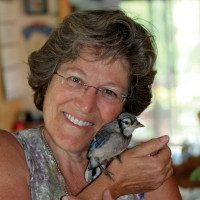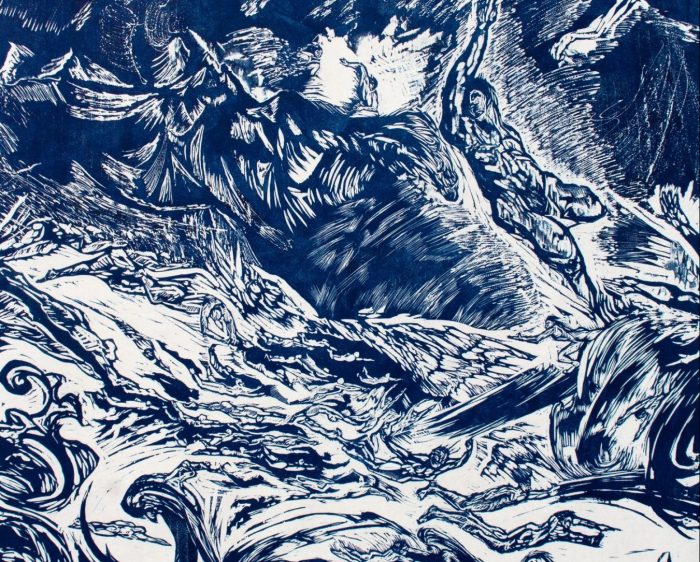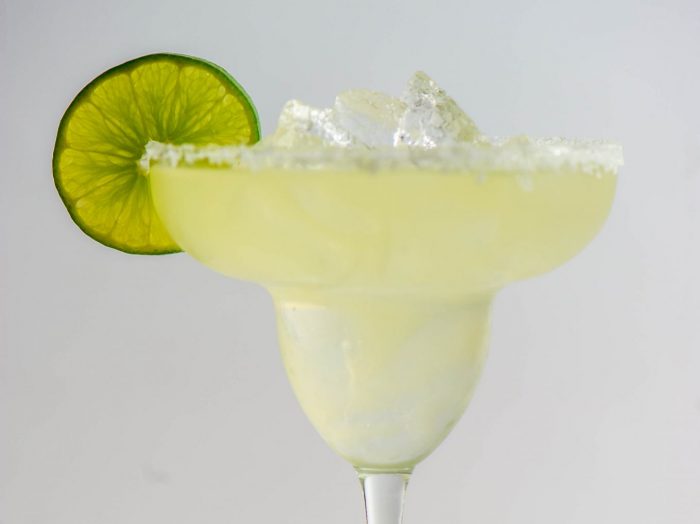Union United Methodist Church, 1019 Pulaski Road, East Northport invites the community to its ‘Pumpkin Patch’ fundraiser from Oct. 1 to 31. Hours are Saturdays from 10 a.m. to 6 p.m., Sundays to Fridays from noon to 6 p.m. and Columbus Day from 10 a.m. to 6 p.m. Choose from pumpkins big and small, gourds and mums. The pumpkin bakery with breads, pies, muffins and more will also be open along with a pumpkin store featuring carving kits, decorations, crafts and books. For more information, call 631-261-1303.
Memorabilia from The Good Steer to be auctioned off

Here’s your chance to own a unique part of Long Island history. Trading Post Estate Sales is currently holding an online auction, The Good Steer: Saying Goodbye to a Legend, through Oct. 1 at 8:15 p.m. Many contents of the Lake Grove restaurant, which closed its doors in July after 65 years in business, are for sale to the highest bidder (over 170 items) and include pictures, knick-knacks, chairs, kitchen equipment, toy cars and holiday items.
Click here to view the items.
For more information, visit www.auctionninja.com.
Home•Land•Nature exhibit opens at Gallery North
Up next for Gallery North in Setauket is Home · Land · Nature, a selection of recent works by artist Han Qin, on view from Sept. 29 to Nov. 13. An opening reception will be held on Thursday, Sept. 29, from 6 to 8 p.m.

The solo exhibition features small, medium, and large cyanotypes, woodblock prints, and drawings that explore concepts of home and the process of relocation.
Drawing from her own experience of migration, Qin renders moments of passing through, of conflict, of getting together, and of migrating into form and image. Her artwork incorporates poignant, structural elements of Confucian philosophy, conveying the fluidity of identity and its evolution.
There is a sense of displacement, chaos, triumph, and eventual replanting in Home · Land · Nature. Qin translates social phenomena and movement — among groups and individuals — into works which incorporate traditional cyanotype, woodblock printing, 3D scanning, and digital printing methods.

“One of the elements that excites me about the exhibition is that while Han’s work draws on the emotions of her own lived experience of migration, they are universal in their ability to connect with viewers. … The works silently call viewers to explore them and ask where they themselves are or have been among these images,” said curator Kate Schwarting.
In collaboration with the Three Village Community Trust (TVCT), Gallery North will also present an outdoor projection event featuring Han Qin’s multimedia work at the TVCT’s Immigrant Worker Houses, located behind the Bruce House at 148 Main Street in Setauket, on Saturday, Oct. 22 at 7 p.m. This projection event will highlight the important experiences of all immigrant groups throughout the history of the Three Village community.
Gallery North will also host an ArTalk with Han Qin on Saturday, Nov. 5 at 6 pm.
Generously sponsored by Jefferson’s Ferry, bld Architecture, and Suffolk County’s Department of Economic Development and Planning, the exhibition, reception and affiliated events are free and open to the public.
Gallery North, 90 North Country Road, Setauket, is open Wednesdays to Saturdays from 11 a.m. to 5 p.m., and Sundays from 1 to 5 p.m. For more information, call 631-751-2676 or visit www.gallerynorth.org.
WMHO to host walking tour experience at the Stony Brook Grist Mill
Join the Ward Melville Heritage Organization (WMHO) in a new walking tour experience, Unwind & Uncork History: The Story of Wine & the Stony Brook Grist Mill on Friday, September 30 at 11 a.m. (3 p.m. tour is sold out!)

In this walking tour experience, tour-goers will “uncork” the stories of the Stony Brook Grist Mill (c. 1751), the sight of Long Island’s very first vineyard. This will include a tour of the Stony Brook Grist Mill, the scandalous story of Edward Kane, his Lakeside Wine Company, and a brief lesson on wine.
The tour will begin at Tranquility Park (also known as T. Bayles Minuse Mill Pond Park) across from the Stony Brook Grist Mill, and will end at Lake Side Emotions Wine Boutique at the Stony Brook Village Center, which gained its name from Kane’s Lakeside Wine Company.
Fee for the tour is $25 per person and includes a bottle of authentic Catawba wine from Lake Side Emotions Wine Boutique. All participants must be 21 or older. Advance registration is required by calling 631-751-2244. For more information, visit www.wmho.org.
Four Harbors Audubon Society hosts autumn lecture Sept. 28
Audubon lecture
 Join the Four Harbors Audubon Society for an autumn lecture via Zoom on Wednesday, September 28 from 8 to 9 p.m. Guest speaker and naturalist, artist, writer Julie Zickefoose will discuss her latest book, Saving Jemima: Life and Love With a Hard-luck Jay, the intimate story of how an orphaned bird can save a soul, which she wrote and illustrated after spending nearly a year healing, studying and raising a young blue jay for release.
Join the Four Harbors Audubon Society for an autumn lecture via Zoom on Wednesday, September 28 from 8 to 9 p.m. Guest speaker and naturalist, artist, writer Julie Zickefoose will discuss her latest book, Saving Jemima: Life and Love With a Hard-luck Jay, the intimate story of how an orphaned bird can save a soul, which she wrote and illustrated after spending nearly a year healing, studying and raising a young blue jay for release.
From the press release:
Naturalist/artist/writer Julie Zickefoose thinks of herself as an unsung, minor, rather dirty superhero. Her superpower: saving small, economically worthless wildlife that would otherwise die. An orphaned jay named Jemima was one such foundling. Spending nearly a year healing, studying and raising the young blue jay for release opened the door to their world for Julie. She began writing and illustrating Saving Jemima: Life and Love With a Hard-luck Jay immediately upon becoming her foster mother. More than a wildlife rehab story, it’s the story of life, love and dealing with great loss; of finding grace and redemption in bonding with a wild bird.
 Julie Zickefoose lives and works quietly on an 80-acre wildlife sanctuary in the back country of Whipple, Ohio. She is a prolific writer and painter and Advising Editor to BWD Magazine. Her heavily illustrated books include Natural Gardening for Birds, Letters from Eden, The Bluebird Effect, and Baby Birds: An Artist Looks Into the Nest. Saving Jemima: Life and Love With a Hard- Luck Jay, the intimate story of how an orphaned bird can save a soul, is her newest book.
Julie Zickefoose lives and works quietly on an 80-acre wildlife sanctuary in the back country of Whipple, Ohio. She is a prolific writer and painter and Advising Editor to BWD Magazine. Her heavily illustrated books include Natural Gardening for Birds, Letters from Eden, The Bluebird Effect, and Baby Birds: An Artist Looks Into the Nest. Saving Jemima: Life and Love With a Hard- Luck Jay, the intimate story of how an orphaned bird can save a soul, is her newest book.
———————————–
This special event is free and open to all. Reservations required. To join this Zoom presentation, you must register in advance by clicking on the link here. Afterwards you will receive an email with link and instructions on how to join the presentation. For more information, visit www.4has.org.
Carnival heads to Mount Sinai’s Heritage Park
Fall into Fun Carnival
Heritage Park, 633 Mount Sinai Coram Road, Mt. Sinai celebrates the season with its annual Fall into Fun Carnival from Sept. 30 to Oct. 2 Enjoy three days of carnival rides, games, food vendors, and fun for the whole family! Hours are Sept. 30 from 6 to 10:30 p.m., Oct. 1 from 11 a.m. to 10:30 p.m., and Oct. 2 from 11 a.m to 6 p.m. Free admission and parking. Pay per ride or purchase a bracelet. Call 509-0882 for more information.
Port Jeff Documentary Series kicks off fall season
Please note: The movie line-up has been updated.
Line-up spotlights how singular stories impact society
By Tara Mae
What responsibility to people have to each other and the planet? This question is a recurring theme examined when the award-winning Port Jefferson Documentary Series’ film festival returns this fall. The season kicks off Monday, Sept. 19 and runs on select Mondays through Nov. 21.
“There is an underlying thread of social responsibility — stand up and do the right thing or at least recognize when things are going wrong and put a spotlight on it — throughout the whole season. It takes a lot of guts to take such a stance,” said co-Director Lyn Boland.
Screenings will be held in person at 7 p.m. With the exception of Rebellion and Heart and Soul, which will be screened at John F. Kennedy Middle School, 200 Jayne Blvd. in Port Jefferson Station, all documentaries will be shown at Theatre Three, 412 Main Street in Port Jefferson.
“This series offers a valuable service, We are offering an opportunity for an arts organization in our community. Many of these films are noncommercial; people would not necessarily be able to see them in movie theaters,” said Theatre Three’s Executive Artistic Director Jeffrey Sanzel.

Sponsored by the Suffolk County Film Commission, the Greater Port Jefferson-Northern Brookhaven Arts Council, Maggio Environmental, Maia Salon Spa and Wellness, and Covati and Janhsen, CPAs, the festival, which started in 2005, will present seven thought-provoking documentaries this year.
Evoking questions of personal responsibility, public activism, and corporate accountability, these documentaries explore the private motivations of public figures, community workers, and morally dubious entities who exploit areas of opaque legality for profit.
Kaepernick & America kicks off the series, exploring the thought process of a man whose actions speak loudly; An Act of Worship amplifies the ingenuity, initiatives, and endurance of female Muslim American activists; The Cave of Adullam chronicles the steadfast dedication of a Black martial arts sensei striving to support at-risk Black youths; Heart and Soul will appeal to rock and roll fans; and Rebellion, American Pain, and The YouTube Effect detail the detrimental impact of a trifecta of concurrent crises: climate change, opioid addiction, and misinformation, respectively.
“This festival really has something for everybody. I do think that we have some really remarkable films. Quite a number explore current events — things that are so much on everyone’s mind,” Boland added.
Following every screening, Tom Needham, host of The Sounds of Film on WUSB, will emcee a Q&A session with the director or producer of the documentary. Some guests will appear in person while others will appear via Zoom.
The documentaries are selected by the all-female film board: co-directors Lyn Boland, Wendy Feinberg, and Barbara Sverd as well as Honey Katz, Lorie Rothstein, and Lynn Rein. Collectively known as “the film ladies,” each woman nominates a documentary to be included in the series and if approved, arranges for the speaker(s) to participate in the Q&A.
After its nomination, the board and volunteers review the film to decide whether it makes the cut. The next step can be among the most challenging: securing the rights to show the documentary. This feat is generally negotiated by contacting the film distribution company or reaching out directly to a filmmaker in person at a festival, or through email and phone. Certain documentarians, such as Alex Winter (The Youtube Effect), have previously shown other work at the Port Jefferson Documentary Series, and thus have an existing connection to it.
Films are largely sourced from festivals like the TriBeca Film Festival and the Hamptons International Film Festival. Board members pay their own travel expenses, tickets, and industry passes.
The Port Jefferson Documentary Series is a passion project for everyone involved.
“My favorite parts of this endeavor are attending film festivals, previewing films on the big screen, and meeting the directors and subjects in the films in person. The satisfaction of having previewed dozens of films and finally then narrowing down to seven of the best with guest speakers for each…I love it. To me, it is entertainment,” said co-director Wendy Feinberg.
Individual tickets are $10 each online or at the door. A season pass is $58 and also available online or at the door.
For further details about the documentaries, booking tickets, or the series in general, visit www.portjeffdocumentaryseries.com.
Film Schedule

■ The season begins with a screening of Kaepernick & America at Theatre Three on Sept. 19. The documentary relives the summer of 2016, an election year with unrest rumbling through America, when Colin Kaepernick took a knee and America lost its mind. Kaepernick & America examines the man and his protest, exploring the remarkable conflict stirred by such a symbolic gesture. Guest speaker will be co-director Tommy Walker.
■ Up next is An Act of Worship on Oct. 3 at Theatre Three. The film weaves a glorious tapestry of personal stories, verité, archival footage, and home movies together, to open a window into the world of Muslim Americans. The film follows three women activists who have come of age since 9/11 and who are part of a new generation of Muslims in America. Guest speakers will be director Nausheen Dadabhoy and producer Sofian Khan.
■ The award-winning film Cave of Adullam heads to Theatre Three on Oct. 10. The film focuses on martial arts sensei Jason Wilson and his efforts to help often-troubled black youths from Detroit at the Cave of Adullam Transformational Training Academy that he founded in 2008. Guest speaker will be director Laura Checkoway.
■ After a brief hiatus, the series continues with a screening of Rebellion at John F. Kennedy Middle School on Oct. 24. The film gives us an in-depth look into the global environmental movement, Extinction Rebellion (XR), established in the United Kingdom, from its beginnings in 2018. Guest spaker will be co-director Maia Kenworthy via Zoom.
■ The festival continues with a a preview screening of Heart and Soul at John F. Kennedy Middle School on Nov. 7. The first-ever Rock & Roll Show at the Brooklyn Paramount Theater electrified the teenagers who waited for hours to see their new idols – Chuck Berry; the Chantels; Frankie Lymon; and a roster of some of the greatest talent of the time. Fourteen-year-old Kenny Vance sat in the balcony mesmerized by a unique style of music that still resonates for him -and many of us- half a century later. The film seeks to solve the question that may never be answered, because, like all art, it is about feelings: What was that particular magic that grabs a heart and never lets it go? Guest speaker will be director Kenny Vance with a vocal harmony performance by Vance & the Planotones.
■ Moving into November, American Pain will be screened at Theatre Three on Nov. 14. A jaw-dropping true crime documentary, the film tells the story of twin brothers and bodybuilders Chris and Jeff George, who operated a franchise of pain clinics in Florida where they handed out pain pills like candy. Director Darren Foster offers an incredibly compelling and shocking story that exposes the tower of corruption that made the George’s enterprise so massively successful. Guest speaker will be producer Carolyn Hepburn.
■ The Youtube Effect heads to Theatre Three on Nov. 21. The documentary takes viewers on a timely and gripping journey inside the cloistered world of YouTube and parent Google. It investigates YouTube’s rise from humble beginnings in the attic of a pizzeria to its explosion onto the world stage, becoming the largest media platform in history and sparking a cultural revolution, while creating massive controversy in the age of disinformation. The film is a startling but necessary look at a website that has become so intertwined with our daily lives. Guest speaker via Zoom will be director Alex Winter.
*Please note all films begin at 7 p.m.
Medical Compass: How can we live well into our 90s?

Modest lifestyle changes can add quality years
By David Dunaief, M.D.

This past Monday, Canada honored the life of Queen Elizabeth II. Among other tributes, there was a 96-shot salute, with one shot for each year of her life. As you might imagine, it took a while.
While living to 96 was once unusual, it’s becoming more common. According to the National Institutes of Health, those in the U.S. who were more than 90 years old increased by 2.5 times over a 30-year period from 1980 to 2010 (1). This group is among what researchers refer to as the “oldest-old,” which includes those aged 85 and older.
What do these people have in common? According to one study, they tend to have fewer chronic morbidities or diseases. Thus, they tend to have a better quality of life with greater physical functioning and mental acuity (2).
In a study of centenarians, genetics played a significant role. Characteristics of this group were that they tended to be healthy and then die rapidly, without prolonged suffering (3). In other words, they grew old “gracefully,” staying mobile and mentally alert.
Factors that predict one’s ability to reach this exclusive club may involve both genetics and lifestyle choices. Let’s look at the research.
Get at least modest exercise
We are told repeatedly to exercise. Here’s one reason. Results of one study showed that 5 to 10 minutes of daily running, regardless of the pace, can have a significant impact on life span by decreasing cardiovascular and all-cause mortality (4).
Amazingly, even if participants ran fewer than six miles per week at a pace slower than 10-minute miles, and even if they ran only one to two days a week, there was still a decrease in mortality compared to nonrunners. Those who ran for this very short amount of time potentially added three years to their life span. There were 55,137 participants ranging in age from 18 to 100 years old.
An accompanying editorial to this study noted that more than 50 percent of people in the United States do not meet the current recommendation of at least 30 minutes of moderate exercise per day (5).
A study presented this past August at the European Society of Cardiology Congress looked at the role of simple physical activity in the elderly (6). It found that those 85 and older reduced the risk of all-cause mortality 40 percent by walking just 60 minutes a week. This is physical activity that does not actually qualify as exercise.
Eat less animal protein
A long-standing paradigm has been that we need to eat sufficient animal protein. However, cracks have developed in this theory, especially as it relates to longevity.
In an observational study using NHANES III data, results show that those who ate a high-protein diet (greater than 20 percent of calories from protein) had a twofold increased risk of all-cause mortality, a four-times increased risk of cancer mortality, and a four-times increased risk of dying from diabetes (7). This was over a considerable duration of 18 years and involved almost 7,000 participants ranging in age at the start of the study from 50 to 65.
However, this did not hold true if the protein source was plants. In fact, a high-protein plant diet may reduce the risks, not increase them. The reason, according to the authors, is that animal protein may increase insulin growth factor-1 and growth hormones that have detrimental effects on the body.
The Adventists Health Study 2 trial reinforced this data. It looked at Seventh-day Adventists, a group that emphasizes a plant-based diet, and found that those who ate animal protein once a week or less had a significantly reduced risk of dying over the next six years compared to those who were more frequent meat eaters (8). This was an observational trial with over 73,000 participants and a median age of 57 years old.
Reduce systemic inflammation
In the Whitehall II study, a specific marker for inflammation was measured, interleukin-6. The study showed that higher levels did not bode well for participants’ longevity (9). In fact, if participants had elevated IL-6 (>2.0 ng/L) at both baseline and at the end of the 10-year follow-up period, their probability of healthy aging decreased by almost half.
The good news is that inflammation can be improved significantly with lifestyle changes.
The takeaway from this study is that IL-6 is a relatively common biomarker for inflammation. It can be measured with a simple blood test offered by most major laboratories. This study involved 3,044 participants over the age of 35 who did not have a stroke, heart attack or cancer at the beginning of the study.
The bottom line is that, although genetics are important for longevity, so too are lifestyle choices. A small amount of exercise and replacing animal protein with plant protein can contribute to a substantial increase in healthy life span. IL-6 may be a useful marker for inflammation, which could help predict healthy or unhealthy outcomes. Therefore, why not have a discussion with your doctor about testing to see if you have an elevated IL-6? Lifestyle modifications may be able to reduce these levels.
References:
(1) nia.nih.gov. (2) J Am Geriatr Soc. 2009;57:432-440. (3) Future of Genomic Medicine (FoGM) VII. Presented March 7, 2014. (4) J Am Coll Cardiol. 2014;64:472-481. (5) J Am Coll Cardiol. 2014;64:482-484. (6) European Society of Cardiology Congress, Aug. 28, 2022. (7) Cell Metab. 2014;19:407-417. (8) JAMA Intern Med. 2013;173:1230-1238. (9) CMAJ. 2013;185:E763-E770.
Dr. David Dunaief is a speaker, author and local lifestyle medicine physician focusing on the integration of medicine, nutrition, fitness and stress management. For further information, visit www.medicalcompassmd.com.
The Wine Connoisseur: The Margarita — a classic cocktail with many stories

By Bob Lipinski
“One tequila, two tequila, three tequila, floor.” — George Carlin
There are many stories as to the origin of the Margarita cocktail. One story states that Danny Negrete, the manager at the Garci Crespo Hotel in Puebla, Mexico, created it for his girlfriend in 1936. Others believe it was created in 1938 in Rosarito Beach, Tijuana and named after showgirl Marjorie King, who was allergic to many distilled spirits except tequila. Danny (Carlos) Herrera, the bartender, kept inventing new and exciting ways to serve tequila so Marjorie would not be bored.
Another story has it created by a Virginia City bartender in memory of his girlfriend who was accidentally shot during a barroom brawl. A further legend places the birth of this cocktail in Hollywood in the 1940s by Enrique Bastante Gutierrez, a former cocktail champion who mixed drinks for some of the world’s most famous film stars. Actress Rita Hayworth (whose real name was Margarita Carmen Cansino) was one of his loyal customers and he invented the drink especially for her.
Another version of its origin has the cocktail made by bartender Don Carlos Orozco at Hussong’s Cantina, in Ensenada, Mexico, who named it after his girlfriend. Yet another story takes place on July 4, 1942, in Juárez, Mexico, where Francisco “Pancho” Morales, a bartender in Tommy’s Place, a favorite hangout for GIs from Fort Bliss, concocted the cocktail. According to Pancho, a woman entered the premises and ordered a cocktail called a Magnolia. He didn’t know the ingredients, so he whipped together his own version of a Magnolia and called it a Margarita, Spanish for daisy.
The most plausible version has the Margarita created in 1948 in Acapulco, Mexico, by a San Antonio, Texas socialite Margarita Sames. To impress Nicky Hilton, of the Hilton Hotel family, she mixed three parts tequila, two parts Cointreau, and one-part lime juice.
Margarita

Yield: Makes one cocktail
Ingredients:
1-1/2 ounces tequila
1-ounce triple sec liqueur (minimum 60 proof)
3/4 ounce freshly squeezed lime (or lemon juice)
coarse salt for the rim of the glass
crushed ice
slice of lemon as a garnish
Directions:
Either shake the ingredients or put into a blender. Then, take a wide-brim glass and place it upside down in a small bowl containing lemon or lime juice and then into another bowl that contains salt to a depth of ¼-inch, which leaves a thin layer on the rim of the glass. Fill the glass and garnish with lime or lemon slice and serve.
Bob Lipinski is the author of 10 books, including “101: Everything You Need To Know About Whiskey” and “Italian Wine & Cheese Made Simple” (available on Amazon.com). He consults and conducts training seminars on Wine, Spirits, and Food and is available for speaking engagements. He can be reached at www.boblipinski.com OR [email protected].
Nature Matters: Long Island’s canary
By John L. Turner
Once in a while I get a phone call, text or email message along the following lines: “John, could I have seen a canary? Moments ago I saw a bright yellow bird at my bird feeder.”. My response? Something along the lines of: “While there’s always the outside possibility of seeing a canary that’s escaped from its cage, it’s much more likely you’ve just seen an American Goldfinch, one of the more colorful native songbirds native to Long Island, brilliantly wrapped in its garb of lemon yellow marked with black wings, tail, and a cap.”
The black coloration and the white wing bars and undertail coverts complete the colorful and distinctive plumage of this native songbird species, distinguishing its appearance from any exotic canary that has escaped from captivity.
Goldfinch are common on Long Island both in wild places and as a regular visitor to backyard thistle feeders. They are routinely found in open habitats with trees — picture a meadow dotted with widely spaced trees — and are a common nesting bird here. Given their attraction to open habitats they are a species that has probably benefited from clearing and the removal of forests and are likely much more common today than when the country was founded. Underscoring their abundance, they were possible, probable, or confirmed breeders in 94% of the designated blocks in the 2005 statewide Breeding Bird Atlas; the only place they were routinely missed was in the heavily forested areas of the Adirondack Mountains, making them one of the top ten most widespread breeders in the state.
And, as mentioned above, they are a welcome and regular visitor to backyard feeding stations, favoring cylindrical thistle feeders where they often compete with each other to gain a perch upon which to snatch thin black thistle seeds. In the winter they are often joined by their finch cousins: Pine Siskins and Common Redpolls, all of which relish thistle seeds. Watching these three colorful species jostling to secure thistle seeds provides one of the birding delights of this season.
Speaking of thistle, the goldfinch has an intimate relationship with the wildflower and it affects their breeding biology. Goldfinch, unlike almost all other songbirds, eat and feed its young very little animal protein such as caterpillars, moths, or beetles. Rather, they eat and feed their nestlings seeds, of which thistle makes up the bulk (but also seeds from other composites). Given this, unlike other songbirds that breed in spring, they have to wait until middle to late summer to breed, until thistle has bloomed and set seed. At a time when other birds have either finished breeding or are well into raising their second brood, goldfinch are just beginning their family-raising chores — it’s not at all unusual to see breeding in late July through August, even into early September.
Thistle also plays an important role in nest building as goldfinch routinely use thistle down for lining the inner cup of their nest. This material helps the bird to make a tightly constructed nest, so well constructed it can hold water. The abandoned nests are sometimes used as wintering and food storage sites for mice and chipmunks, making snug homes and pantries.
The most telltale sign of breeding is the male goldfinch’s nuptial flight. With the female watching from below, the male flies in a wide circle a hundred or feet above the ground in a classic undulating or roller coaster-like pattern, all the while singing which contains a phrase that has been likened to “potato chip, potato chip”! We heard a male goldfinch “potato chipping” regularly over our backyard patio while eating dinner outside on several late August nights, suggesting our yard was within breeding territory. I looked for a nest among the yard’s shrubbery but, alas, turned up empty. Henry David Thoreau observed the goldfinch’s nuptial display and characterized the bounding flight as if the bird was “skimming over unseen billows.” I, too, came up empty in feeling any buoyant billows but enjoyed the repeated phrases of “potato chip” as I ate potato salad.
While the “potato chip” sequence may be the bird’s most familiar vocalization, they have other songs and calls. Their typical song is a delight — varied notes of different intensity and tone, given rapidly, imparting a happy quality to the song. They also have a call that has a distinctive “wheezy” quality, quite similar in sound to other finches.
After the breeding season, the American Goldfinch experiences a full body molt replacing the colorful breeding plumage with a duller but still attractive feather coat of subdued colors. This is the goldfinch that visits your yard feeders during the colder months. With the arrival of Spring the male molts again, this time a partial molt involving only its body feather (but not its wings and tail) and the “canary yellow” plumage has returned.
Two other goldfinch species — Lesser and Lawrence’s — occur in North America. These are both western species and rarely if ever turn up here. So if you vacation in the West be on the lookout for these cousins of the American Goldfinch, and of course you might see American Goldfinch too, as their breeding distribution encompasses all of the lower 48 states. And if you see the American Goldfinch in Washington you will have seen its official state bird (it is also the state bird of Iowa and New Jersey).
Much folklore and indigenous American stories surround the goldfinch. Writing about indigenous people stories, one animal folklorist notes: “In one Iroquois legend, goldfinches were originally a drab black or grey color. Dissatisfied with their plumage, these finches only earned their gold coloration through an act of selfless kindness. As the story goes, a fox took a nap beneath a pine tree. As he did this, the sap dropped into his eyes and sealed them shut. He begged for help and the drab grey finches agreed to help him. They worked in shifts pecking at the sap until the fox could open his eyes again. The fox offered them a reward of their choice for their help. When they asked him for brighter colors, the fox pressed yellow flowers into paint and painted the finches with his tail as a brush. The finches were so pleased with their new plumage that they began to flutter, dance, and sing. This is the reason that finches still flutter while they fly and sing such cheerful songs!”
Given their bright and sunny colors, bubbly songs, and gregarious nature, goldfinches have long been symbols of good luck and to see one, or better yet, to watch a flock, was a good omen meaning good fortune. I think my spouse, Georgia, I and our three dogs Esmy, Henry, and Daisy are in line for much good fortune because during a recent walk we had a flock of twenty-four goldfinches perched in a copse of shrubs at Forsythe Meadow County Park in Stony Brook. For Georgia and me, though, the good fortune was watching and listening to this cheery flock of lemon-yellow sprites of sunshine, singing away for minutes on end. For the dogs, their fortune came when they each received a barbecue-flavored dog cookie at the end of the walk.
I hope you also see goldfinch during your late summer rambles or later in the year at your bird feeders — and are imbued too with good fortune, not the least of which is just the opportunity to watch these most colorful and cheery of birds.
A resident of Setauket, John Turner is conservation chair of the Four Harbors Audubon Society, author of “Exploring the Other Island: A Seasonal Nature Guide to Long Island” and president of Alula Birding & Natural History Tours.















